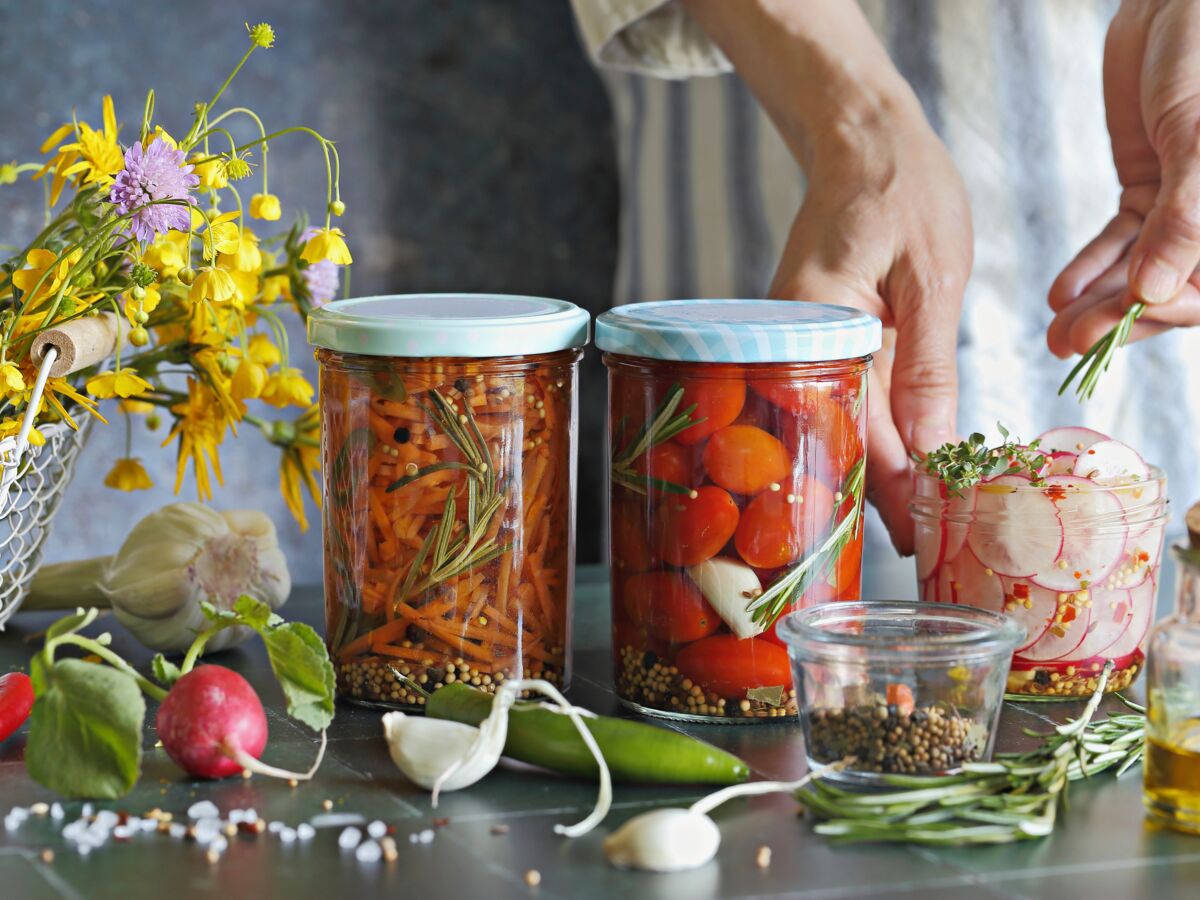Caroline pots herself the concentrate that she makes with tomatoes from her garden. Rima makes jams with her own fruit, Cécile prepares her preserves at the end of summer – following the advice of Current wife. Our grandmothers, for whom it went without saying, would be the first surprises: in the kitchen, home-cooking has regained momentum in recent years. According to an Ipsos* poll, 96% of French people think this is a good thing. The reasons ? Make sure what they consume is good for them (67%), for their budget (65%) and for avoid the waste (65%). The observation applies to food, but also to clothing, decoration, beauty products…
The phenomenon has a name, DIY (pronounce di-aille-ouaille), for Do It Yourself, do it yourself, in French. It was not born yesterday but at the beginning of the 20th century, in the United States, in journals specializing in mechanics or agricultural technology. In France, at the same time, in 1919, the visionary Edouard Boucherit launched the timeless Modes & Works. Fifty years later, the concept is brought up to date by the heirs of the hippies, the first ecologists. But it did not survive the 1970s. Mass consumption, hypermarkets and shopping areas have definitely buried it, we think.
This is counting without the economic crisis of 2008. Life is becoming more expensive, the consumerist model, with its social, health and environmental excesses, is being called into question. We talk about “back to basics”, “authenticity”, “raw product”. And then, above all, there is the explosion of the Internet.
This is the great novelty, the internet, the X factor, the detonator: on the blogs First of all, on video then, on social networks finally, the wave swells and submerges everything. Specialized websites are born and prosper. On YouTube, Facebook or Pinterest, the tutorials are multiplyingin all forms and in all fields, DIY and decoration, scrapbooking and car repair, beauty creams and, of course, cooking.
With the Covid pandemic and the confinements, many of us have found our way back to the stoves, the pleasure of concocting healthy and economical meals yourself with fresh and seasonal products… and have continued since! Especially since, to enjoy the good products of the end of summer all year round, and to save time by feasting on a daily basis, it is enough to put them in a jar. Now is the perfect time.
* Ipsos study for the E. Leclerc Observatory of new consumption
Gleaning: instructions for use
What if you became (a bit) your own farmer? If, like many French people, you pick up in the fields, after the harvest, what the producer has not harvested, fruits, flowers or vegetables? Since a royal edict of 1554 never repealed, the practice is authorized, under conditions: it must intervene on an unfenced ground, after sunrise and before sunset, without tools and in reasonable quantities, corresponding to a family consumption. It is moreover advised to check with the town hall concerned that it has not issued additional restrictions and, as a security measure and as a correctionto ask the farmer for his opinion. To find out where to glean, find out from the municipalities, on the many Facebook pages and groups devoted to the subject or on this website which brings together all the gleaners in the world, fallingfruit.org.
I make a bag for my fresh fruit
Stitch 1 cm from the edge, the lengths of 2 cotton rectangles of 46 x 18 cm (Prima Mercerie), on either side of a tarlatan coupon of the same dimensions. You get a new rectangle of 50 cm x W 46 cm. Iron, folding down the seams on the cotton side. Form 1 tube by stitching the two long sides, always 1 cm from the edge, right sides together. Iron with this seam in the center of the resulting tube.
To form the bottom, stitch the two widths always right sides together 1 cm from the edges. Fold back a corner by overlapping the bottom seam with the side fold. Stitch perpendicularly, 6 cm from the top of the resulting triangle. Do the same on the opposite side to form the bottom of the bag. Return to the location.
Up, fold the cotton 1 cm from the edge and fold it again, wrong sides together, overlapping the top fold with the cotton/tarlatan seam (you get a double layer of cotton).
Take a first time closest to the seam. Transplant in parallel, 2 cm above. Using the seam ripper, open a small 2 cm slit between these two seams and slide the ribbon through it using a safety pin. Tie.
Beeswax protective sheets
On the ironing board, arrange in a sandwich: a sheet of parchment paper, a previously washed cotton square (26 x 26 cm), about 2 tbsp. tablespoons of wax nuggets, a sheet of parchment paper.
Pass the hot iron, without steam, to melt the wax. Peel off the top parchment paper, then the wax-soaked fabric. If the wax is not well distributed, add nuggets of wax and start again.
Hang the fabric on the clip hanger. Leave to set for 10 minutes. Trim the edges with pinking scissors.
Read also :
⋙ Our best homemade jar recipes
⋙ Jars are making a comeback
⋙ 4 tips that are really too easy to open jars without forcing
